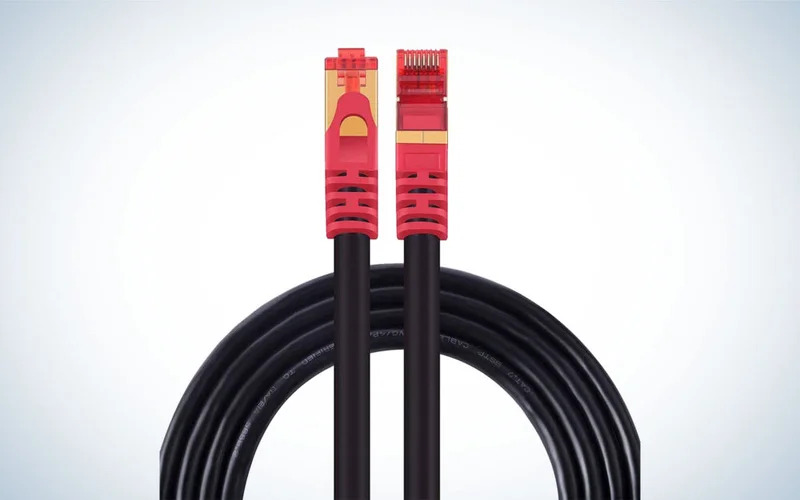Selecting the appropriate Ethernet cable is essential while building a network in Dubai, United Arab Emirates. Because they are made to endure inclement weather, outdoor Ethernet cables are perfect for outside installations. In contrast, Outdoor vs Indoor Ethernet cable prioritizes flexibility and is suitable for controlled environments. Selecting the appropriate cable ensures reliable connectivity, adapting to the unique climate challenges of Dubai while meeting the specific needs of indoor or outdoor networking scenarios.
I. Using Indoor Ethernet Cable Outside

1. Durability Concerns: Indoor Ethernet cable is not designed to withstand the harsh elements of the outdoors, such as extreme temperatures, humidity, and UV radiation. Prolonged exposure to these conditions can lead to cracking, splitting, and overall deterioration of the cable’s jacket, rendering it unreliable and susceptible to signal interference.
2. Limited Protection: Outdoor vs Indoor Ethernet Cable typically lacks the additional shielding and waterproofing present in outdoor-rated cables. This leaves them more vulnerable to moisture ingress and damage from pests like rodents or insects, which could compromise the integrity of the cable’s internal conductors.
3. Performance Degradation: Exposure to the elements can also affect the performance of Outdoor vs Indoor Ethernet Cable. Over time, temperature fluctuations, humidity, and UV radiation can degrade the quality of the cable’s insulation, leading to signal loss, reduced transmission speeds, and potential data corruption.
4. Safety Hazards: Using indoor Ethernet cable for outdoor applications can pose safety hazards. The thin jacket of indoor cables is not designed to withstand the rigors of outdoor environments, making them more susceptible to damage from abrasion, sharp objects, or heavy foot traffic. This raises the risk of electrical shorts or fires.
5. Reduced Lifespan: The overall lifespan of indoor Ethernet cable is significantly shorter when used outdoors. The cumulative effects of weather exposure and physical damage can drastically reduce the cable’s useful life, necessitating costly replacements and network downtime.
II. Outdoor Vs Indoor Ethernet Cable
Sure, here is a list of the key differences between Outdoor vs Indoor Ethernet Cable, in a listicle format and with a maximum of 80 words:
1. Outdoor Ethernet Cables
- Durable jacket: Defy the elements with resilience: brave the sun’s gaze, repel moisture’s embrace, and stand firm against the harshest temperatures.
- Direct burial rated: Sink into the earth effortlessly, free from the confines of conduit: bury directly and let nature embrace your connection.
- Suitable for long runs: Can be used for longer distances than indoor cables.
2. Indoor Ethernet Cables
- Less durable jacket: Crafted for optimal performance in controlled environments, not intended for exposure to extreme weather challenges.
- Not suitable for direct burial: Must be run in conduit or protected from the elements.
- Suitable for shorter runs: Typically used for shorter distances than outdoor cables.
III. Outdoor Ethernet Cable Cat6
- Weather-Resistant Shielding: Cat6 Outdoor vs Indoor Ethernet Cable features robust shielding to withstand harsh weather conditions, ensuring reliable connectivity in rain or shine.
- UV-Resistant Jacket: Equipped with a UV-resistant outer layer, these cables prevent damage from prolonged sun exposure, maintaining performance over time.
- Burial-Grade Durability: Designed for underground installation, these cables boast burial-grade durability, safeguarding your network connections even when buried in soil or gravel.
- High-Speed Data Transfer: With Cat6 specifications, these cables deliver high-speed data transfer, perfect for demanding outdoor applications such as security cameras or outdoor Wi-Fi setups.
- Flexible and Tangle-Free: Engineered for flexibility, these cables are easy to install and resist tangling, making them ideal for outdoor networking projects.
A. Difference Between Indoor And Outdoor Cat6 Cable
- Outdoor Cat6 cables have a thicker, more durable jacket made of PVC or polyethylene to withstand harsh weather conditions like extreme temperatures, UV rays, and moisture.
- Indoor Cat6 cables have a thinner, more flexible jacket made of CM or CMP materials, suitable for installations within walls, ceilings, and other indoor environments.
- Outdoor Cat6 cables are designed for direct burial underground, while indoor Cat6 cables are not.
B. Can I use indoor Ethernet cable outside?
Using Outdoor vs Indoor Ethernet Cable outside is not recommended. Outdoor conditions expose cables to moisture, UV rays, and temperature extremes, leading to deterioration. Outdoor-rated cables have protective jackets for durability. Using indoor cables outdoors may result in signal degradation and reduced lifespan.
C. How Do I Know If My Ethernet Cable is Outdoor Rated?
- Check the Label: Look for “Outdoor Rated” or “UV Resistant” on the cable’s packaging.
- Examine the Jacket: Outdoor cables typically have a thick, durable jacket for weather resistance.
- Inspect the Connectors: Outdoor cables often feature weatherproof connectors with additional protection.
- Review Specifications: Check the cable specifications for outdoor use or water resistance.
- Consult Manufacturer’s Information: Visit the manufacturer’s website for details on cable usage and specifications.